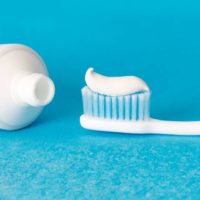Are You And Your Toothpaste Compatible? Find Out!

Brushing your teeth is a no-brainer, but did you know that the type of toothpaste you use could have a big impact on your smile? Whether your teeth are extra sensitive, need added protection, or could simply use a boost in the looks department, chances are there’s a toothpaste out there that fits the bill.
Use this detailed guide to help you pick the perfect paste (or gel) for your pearly whites.
Why Toothpaste Is Necessary
If you’ve ever wondered if toothpaste is truly important, let alone the type of toothpaste you choose, here is why it matters:
1. Toothpaste improves abrasion to help remove plaque thoroughly and efficiently
2. Most toothpastes contain fluoride, a proven cavity fighter that also reverses decay
3. Toothpaste can prevent discoloration, especially those with stain-lifting ingredients
4. Toothpaste can refresh the palate and discourage excess snacking
Even if you brush with the most basic of toothpastes, it is better than brushing with water alone.
Types of Toothpaste
New combinations and varieties of toothpaste are always hitting the shelves, but most tend to fall into these general categories:
1. Anti-Cavity Toothpastes
Technically, any type of toothpaste can be viewed as “anti-cavity”, but specific brands may wield more fluoride than others to help remineralize teeth and prevent decay. Depending on your dental situation, your dentist may prescribe a particular anti-cavity toothpaste, but there are countless options available over the counter. For added assurance, simply look for the ADA seal on the packaging. Anti-cavity toothpastes may be the best bet for those who are looking for general maintenance of their oral health or those who have had extensive dental work and need to prevent further decay.
2. Toothpastes for Sensitive Teeth
If your teeth are sensitive to extreme temperatures and/or easily irritated by certain foods, this type of toothpaste may give you the relief you need. Toothpastes specifically designed for sensitive teeth can help protect and strengthen weakened tooth enamel using blocking compounds such as potassium nitrate or strontium chloride. For those who go this route, it’s important to note that it may take several weeks before you notice any results. To speed up results, dentist recommend spitting out toothpaste when you are done brushing, but don’t rinse with water.
3. Tartar Control Toothpastes
People who suffer from gum disease may require toothpaste with added tartar control properties to help combat excess plaque buildup. Instead of one bacteria-fighting agent, tartar control toothpastes may use multiple ingredients to combat the problem, from triclosan to pyrophosphates and zinc citrate. Taking advantage of this type of toothpaste can help slow buildup, but if a significant amount of tartar (hardened plaque) already exists, removal will require a professional cleaning.
4. Whitening Toothpastes
Yellow and/or stained teeth can become visibly brighter with the help of a whitening toothpaste. Compared to basic toothpastes, whitening toothpastes tend to have more abrasive particles and other special stain-fighting compounds that lift particles off the teeth and give them added polish. While it’s completely safe for everyday use, this may not be the best choice for those experiencing tooth sensitivity, as certain whitening ingredients may exacerbate the condition. Keep in mind, whitening toothpaste will not have the same results as whitening gel.
The Best Toothpaste for You
Once you’ve narrowed down your search, trial and error may be the most practical way to find the right toothpaste for you. Don’t be afraid to test out products, and check with your dentist for specific recommendations based on your dental health.
Sources:
Heid, Martha. (2013, February 1). What Kind Of Toothpaste Should You Use. Retrieved June 26, 2015, from http://www.prevention.com/health/health-concerns/best-toothpaste-your-teeth?slide=1
Weighing Your Toothpaste Options (2015, June 9). Retrieved June 28, 2015, from http://www.webmd.com/oral-health/guide/weighing-your-toothpaste-options?page=2